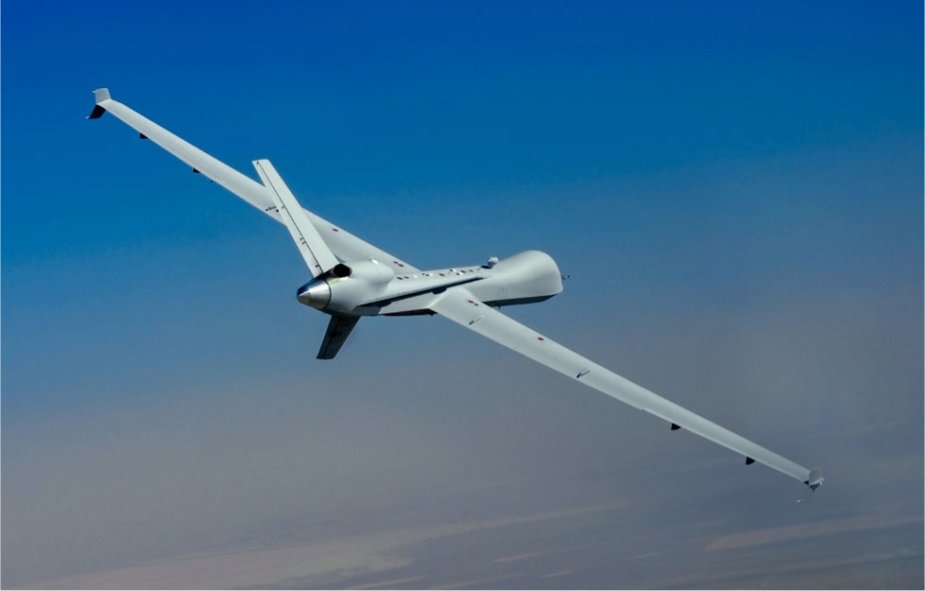Breaking news
US Marine Corps trains with MQ-9A Unmanned Aircraft System.
According to a PR published by General Atomics Aeronautical Systems, Inc. on March 30, 2023, the firm is working with the U.S. Marine Corps (USMC) on a series of Service-Level Training Exercises (SLTE) using a company-owned MQ-9A Unmanned Aircraft System to support the Marine Air-Ground Task Force Training Command (MAGTFTC).
Follow Navy Recognition on Google News at this link
 MQ-9A Unmanned Aircraft System. (Picture source: GA ASI)
MQ-9A Unmanned Aircraft System. (Picture source: GA ASI)
The SLTE 2-23 is being conducted near Twentynine Palms, Calif. with participation from Joint Forces. The training ensures participants are prepared for the future dynamic environment.
Contracting the use of MQ-9A enabled USMC to begin integrating Group 5 unmanned aircraft into the Marine Air-Ground Task Force for the first time within the various exercises.
GA-ASI began flying the MQ-9A on Feb. 3, 2023, with a combination of GA-ASI and VMU-3 pilots and sensor operators. The aircraft flew out of GA-ASI’s facility at the Yuma Proving Ground, Ariz., with flights over training ranges in Southwest-Continental United States (CONUS).
The MQ-9A is providing its proven Intelligence, Surveillance, and Reconnaissance (ISR) data package – including GA-ASI’s Lynx® Multi-mode Radar – to provide the USMC with extraordinary situational awareness and simulated close air support.
The SLTE Program consists of a series of exercises, including the live-fire Integrated Training Exercise (ITX), Marine Littoral Regiment Training Exercise (MLR TE), and Force-on-Force (FoF) MAGTF Warfighting Exercise (MWX).
MAGTFTC executes the SLTE Program, which includes simulated and live-fire armed exercises, to enhance the readiness of the Fleet Marine Forces and support the Marine Corps’ responsibilities to national security.
About MQ-9A
The MQ-9A has exceptional operational flexibility, with an endurance of over 27 hours, a speed of 240 KTAS, a maximum altitude of 50,000 feet, and a payload capacity of 3,850 pounds (1746 kilograms), including 3,000 pounds (1361 kilograms) of external stores.
Compared to its predecessor, the MQ-9A carries 500% more payload and has nine times the horsepower, making it a highly capable long-endurance surveillance/strike platform.
The MQ-9A is powered by the Honeywell TPE331-10 turboprop engine, which is integrated with a Digital Electronic Engine Control (DEEC) system that significantly improves engine performance and fuel efficiency, particularly at low altitudes.
The MQ-9A is highly modular and can be configured with a variety of payloads to meet specific mission requirements. It is capable of carrying multiple mission payloads, including Electro-optical/Infrared (EO/IR) sensors, Lynx Multi-mode Radar, multi-mode maritime surveillance radar, Electronic Support Measures (ESM), laser designators, and various weapons and payload packages.




























